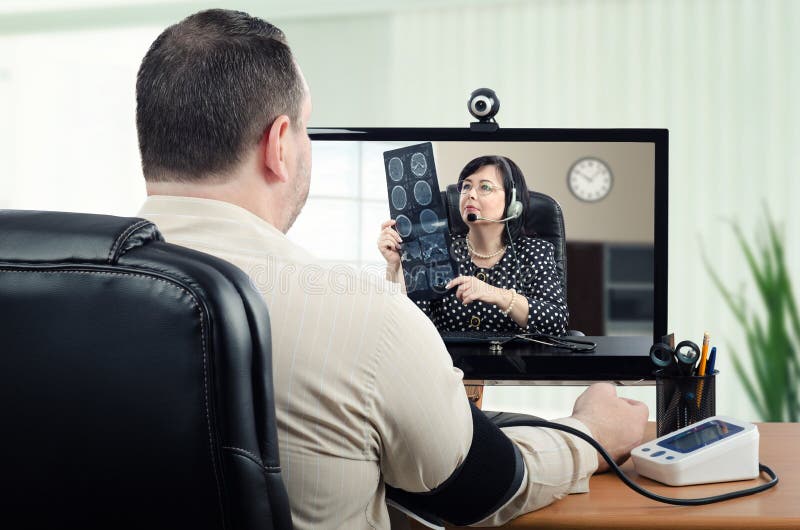Teledoctors: Bridging the Space Between Clients and Healthcare Providers
The development of teledoctors stands for a considerable change in the health care landscape, offering remedies to long-lasting access issues dealt with by individuals and service providers alike. By incorporating telemedicine into conventional techniques, healthcare systems can get to remote and underserved populations, providing critical clinical assessments without the barriers of range and travel.
Surge of Telemedicine

The surge of telemedicine is likewise sustained by the requirement for cost-efficient medical care. Medical care systems globally are under stress to lower expenses while keeping high quality treatment, and telemedicine provides a viable remedy. By minimizing the requirement for physical sees, telemedicine lowers above costs for medical care centers and ultimately decreases the economic concern on patients.
Additionally, the COVID-19 pandemic acted as a catalyst, speeding up the adoption of telemedicine practices. Social distancing steps and the demand to decrease direct exposure danger required a change towards remote examinations, prompting regulative bodies to support and adjust telehealth services. This change has not only proven telemedicine's efficiency however also its possible to evolve as a staple part of contemporary health care systems.
Advantages for Patients
As telemedicine remains to reshape health care distribution, clients stand to get substantially from this transformation. Primarily, telemedicine improves accessibility, enabling individuals in remote or underserved areas to speak with healthcare service providers without the requirement for considerable traveling. This is especially advantageous for individuals with flexibility concerns or those living in country areas where medical care facilities could be limited. Telemedicine additionally offers clients the convenience of getting clinical recommendations and treatment from the convenience of their homes, reducing the time and price linked with taking a trip to a health care facility.
Moreover, telemedicine supports continuity of care by promoting routine follow-ups and surveillance, which are crucial for handling persistent problems. Individuals can quickly schedule appointments and access medical care solutions outside traditional office hours, suiting their busy way of livings. This versatility brings about enhanced client involvement and adherence to therapy plans, possibly resulting in much better health and wellness results.
In addition, telemedicine can aid minimize the danger of infection transmission, a worry increased by the COVID-19 pandemic. By reducing the requirement for in-person gos to, clients can prevent jampacked waiting spaces and decrease direct exposure to infectious health problems. Eventually, telemedicine encourages patients by giving timely, reliable, and individualized healthcare services.
Advantages for Providers
For doctor, telemedicine offers significant advantages that enhance the performance and reach of their method. By leveraging electronic technology, companies can expand their services to a wider market, including those in remote or underserved areas. This not only reduces geographical barriers but also optimizes person retention and purchase by making healthcare much more obtainable.
With telemedicine, the requirement for physical space decreases, permitting service providers to conserve on real estate and functional expenditures. This versatility can lead to raised individual consultations per day, therefore improving profits potential.
Telemedicine also cultivates a much more collective environment for doctor. teledoctors. It allows seamless sharing of client details amongst experts, enhancing analysis accuracy and therapy results. Furthermore, digital systems can integrate with digital health and wellness documents (EHRs), enhancing information precision and simplifying administrative tasks
Moreover, telemedicine enhances person satisfaction, which is essential for service provider credibility and success. By providing timely and convenient care, suppliers can boost individual loyalty and involvement, further strengthening the provider-patient partnership.
Conquering Obstacles
While telemedicine offers various benefits for doctor, it likewise presents difficulties that require careful consideration. One significant challenge is making sure data privacy and protection. As person info is transmitted electronically, the risk of information violations boosts, requiring robust cybersecurity actions. Doctor should abide by rigorous regulations like HIPAA to safeguard delicate info, consequently calling for financial investment in safe systems and recurring personnel training.
An additional obstacle is the electronic divide, which can hinder access to telemedicine solutions. Not all individuals have equal access to the necessary technology or net connection, particularly those in country or underserved locations. This variation can aggravate existing healthcare inequalities, making it essential for providers to check out alternate options, such as collaborations with community organizations, to link this space.
Additionally, there are constraints in conducting physical exams from another location. Specific conditions need in-person evaluation, highlighting the need for a crossbreed version that incorporates telemedicine with standard gos this page to. When telemedicine is proper and guaranteeing smooth transitions in between in-person and online treatment., service providers should navigate these difficulties by establishing protocols to identify.
Future of Healthcare
The future of health care is positioned for a transformative advancement, driven by the rapid integration of innovation and advancement. This not only improves person comfort yet additionally increases accessibility to medical care, especially in underserved and country areas.
Man-made knowledge (AI) and artificial intelligence are also readied to play essential roles. These innovations can analyze substantial amounts of data, supplying predictive insights right into person wellness, boosting analysis accuracy, and personalizing treatment strategies. AI-driven tools can find here augment medical care service providers' capabilities, leading to even more informed decision-making and much better patient end results.
Additionally, wearable modern technology and Internet of Clinical Things (IoMT) gadgets are transforming person engagement and positive health and wellness monitoring. These devices allow continuous wellness monitoring, permitting early discovery of possible issues and prompt treatments.
As these technologies remain to breakthrough, they promise to create a more efficient, accessible, and patient-centric healthcare system, ultimately bridging the void between clients and healthcare suppliers. - teledoctors
Verdict
Teledoctors are changing health care by substantially improving access and effectiveness with remote consultations. This development sustains people in underserved locations by offering prompt clinical suggestions without needing physical visits, hence enhancing individual interaction and connection of care. Doctor profit from more reliable time monitoring and enhanced cooperation chances. Regardless of difficulties check out this site such as technical barriers and governing issues, the future of health care shows up reliable and increasingly inclusive as a result of the assimilation of telemedicine right into conventional treatment designs.

As telemedicine continues to improve health care shipment, clients stand to gain significantly from this change. Largely, telemedicine enhances ease of access, allowing people in underserved or remote areas to seek advice from health care suppliers without the demand for extensive travel. Telemedicine also provides clients the convenience of obtaining medical recommendations and therapy from the comfort of their homes, decreasing the time and expense associated with taking a trip to a healthcare facility.
Ultimately, telemedicine empowers patients by supplying timely, effective, and personalized health care services.